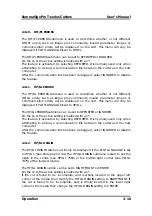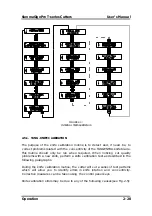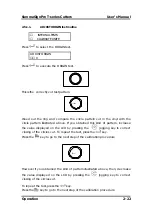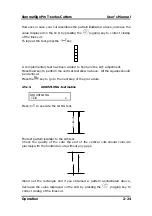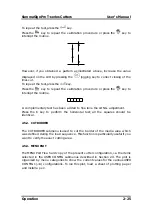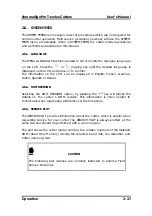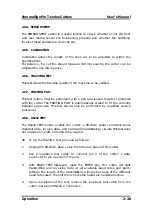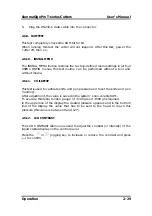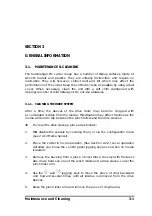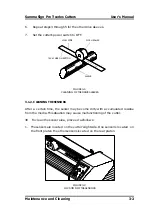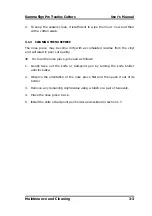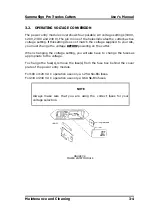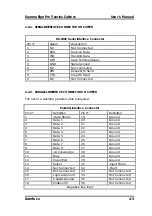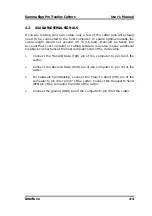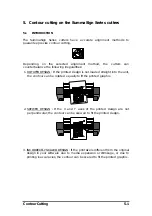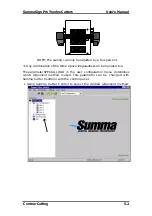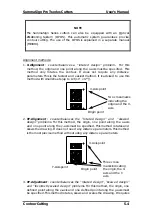
SummaSign Pro T-series Cutters
User’ s Manual
Operation
2-28
2.6.4. SENSOR SETUP
The SENSOR SETUP option is a useful routine to check whether or not the front
and rear media sensor are functioning properly and whether the switching
levels of these sensors are correctly set.
2.6.5. CALIBRATION
Calibration allows the length of the lines cut to be adjusted to within the
specifications.
For instance, if a cut line should measure 100 mm exactly, the cutter can be
adjusted for any discrepancy.
2.6.6. TRACKING TEST
This test allows the tracking quality of the machine to be verified.
2.6.7. FRICTION PLOT
This test routine must be performed with a pen and is used to detect problems
with the cutter. The FRICTION PLOT is automatically scaled to fit the currently
installed paper size. This test should only be performed by qualified service
personnel.
2.6.8. RS232 TEST
The RS232 TEST routine verifies the cutter’ s RS-232-C serial communications
(transmit data, receive data, and hardware handshaking) circuits. This test does
not require pen, knife or media to be loaded.
è
To run the RS-232-C test, proceed as follows :
1.
Unplug the RS-232-C data cable from the rear panel of the cutter.
2.
Use a loopback test cable to connect pin 2 of the cutter’ s data
connector to pin 3 and pin 7 to pin 8.
3.
With RS232 TEST displayed, press the ENTER key. The cutter will start
transmitting and receiving data at all available baud rates and parity
settings. The length of the transmissions will vary because of the different
baud rates used. The unit then checks the hardware handshake lines.
4.
Upon completion of the test, remove the loopback test cable from the
cutter rear panel RS-232-C connector.



